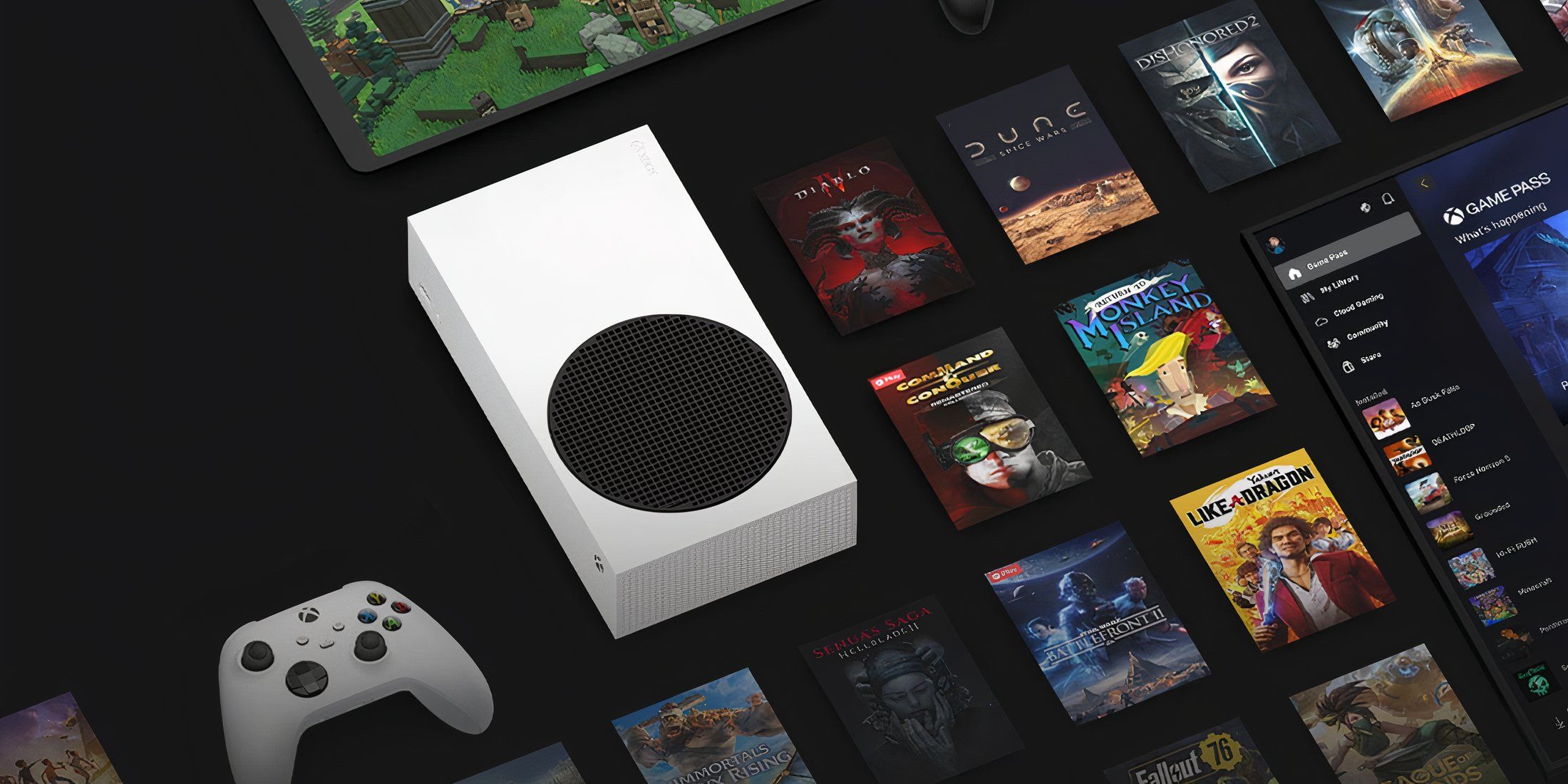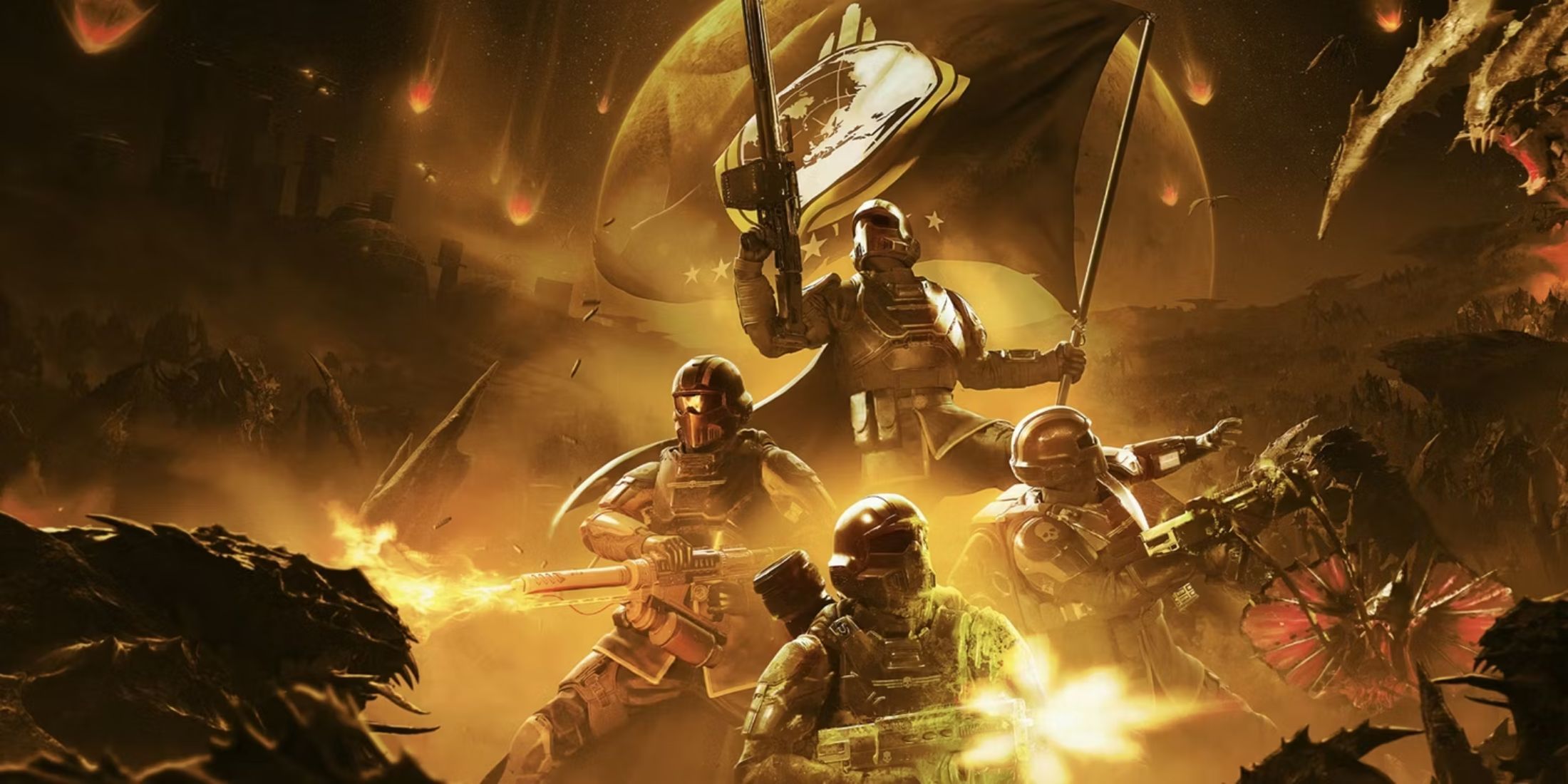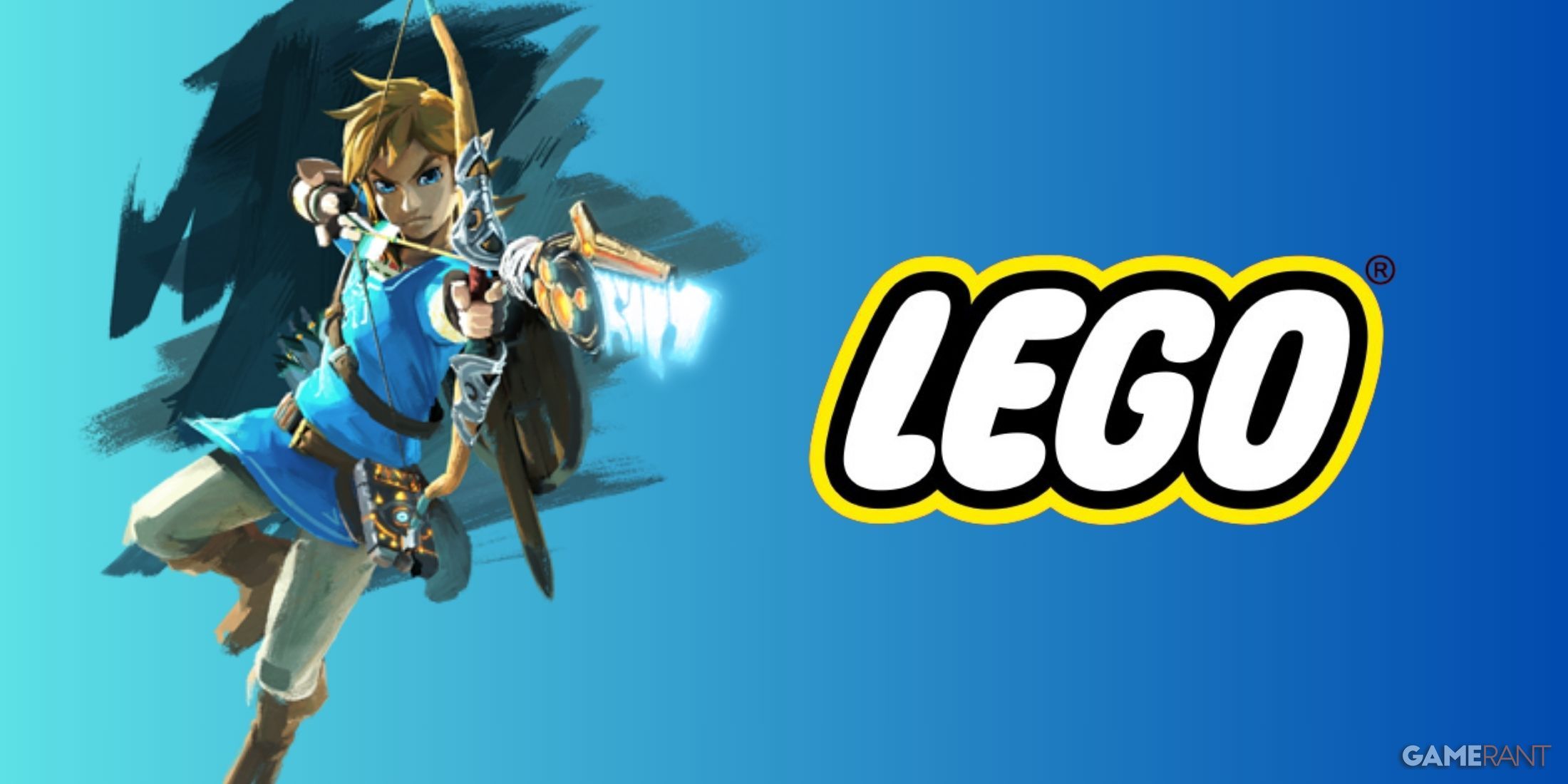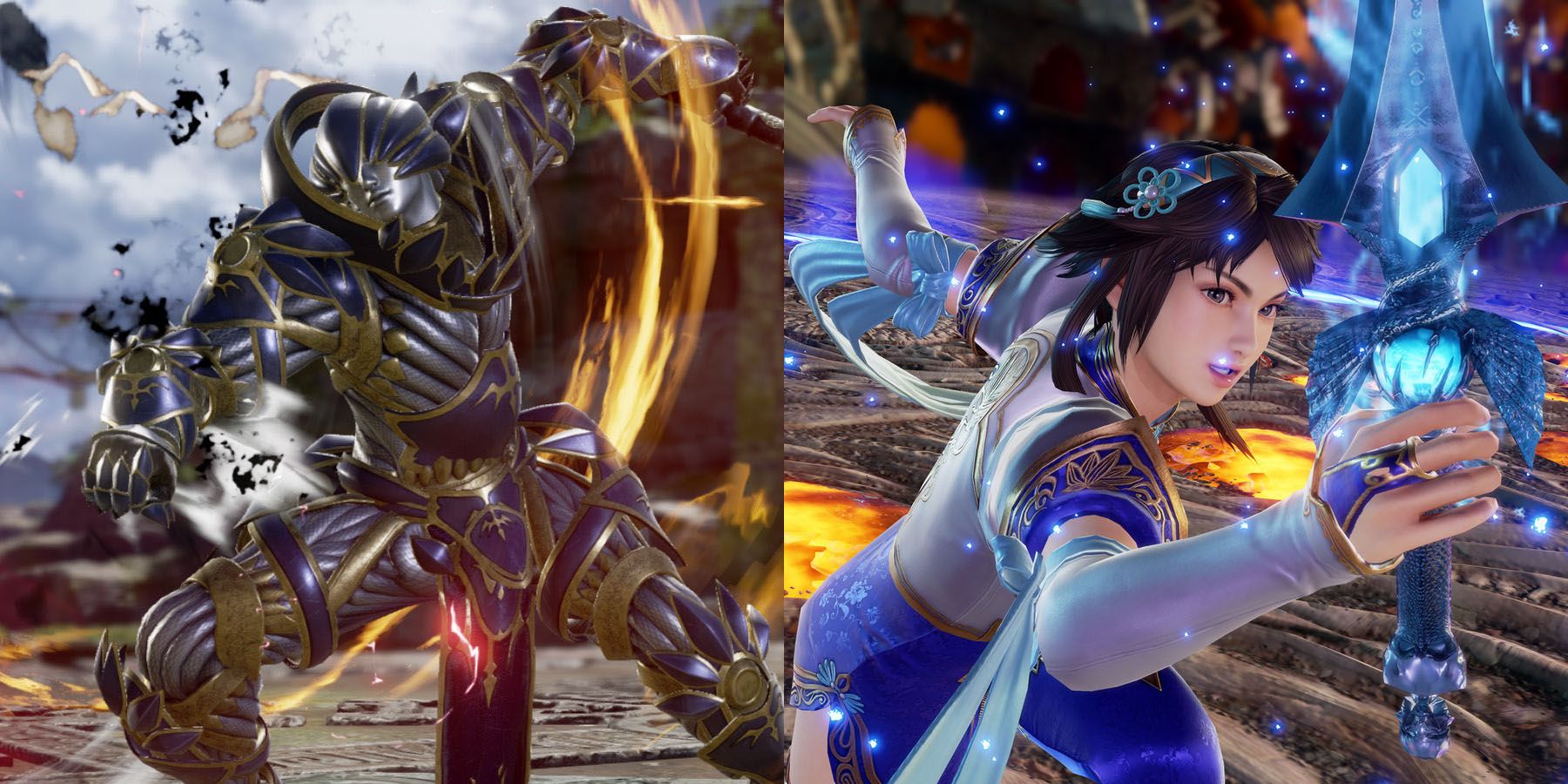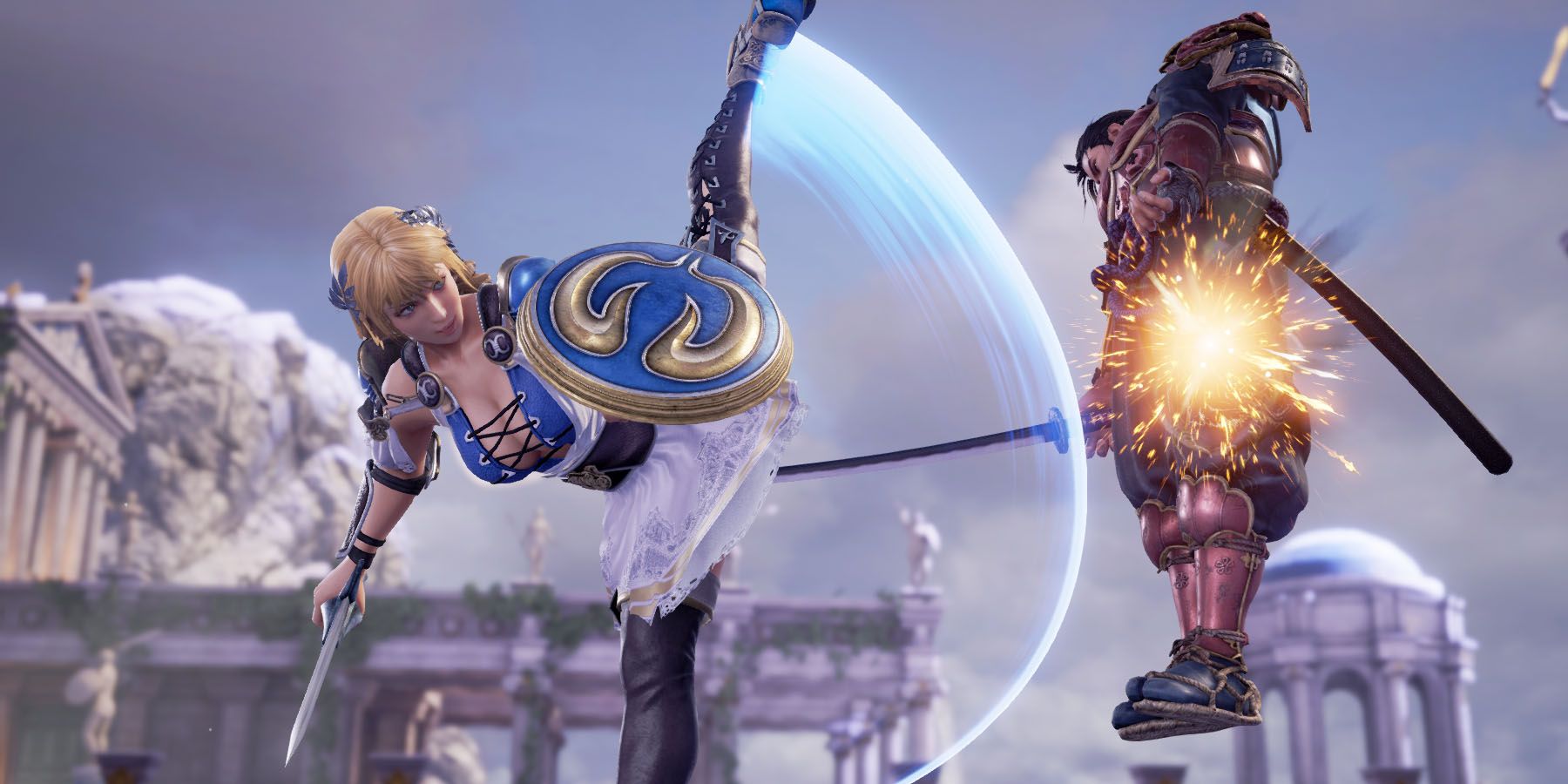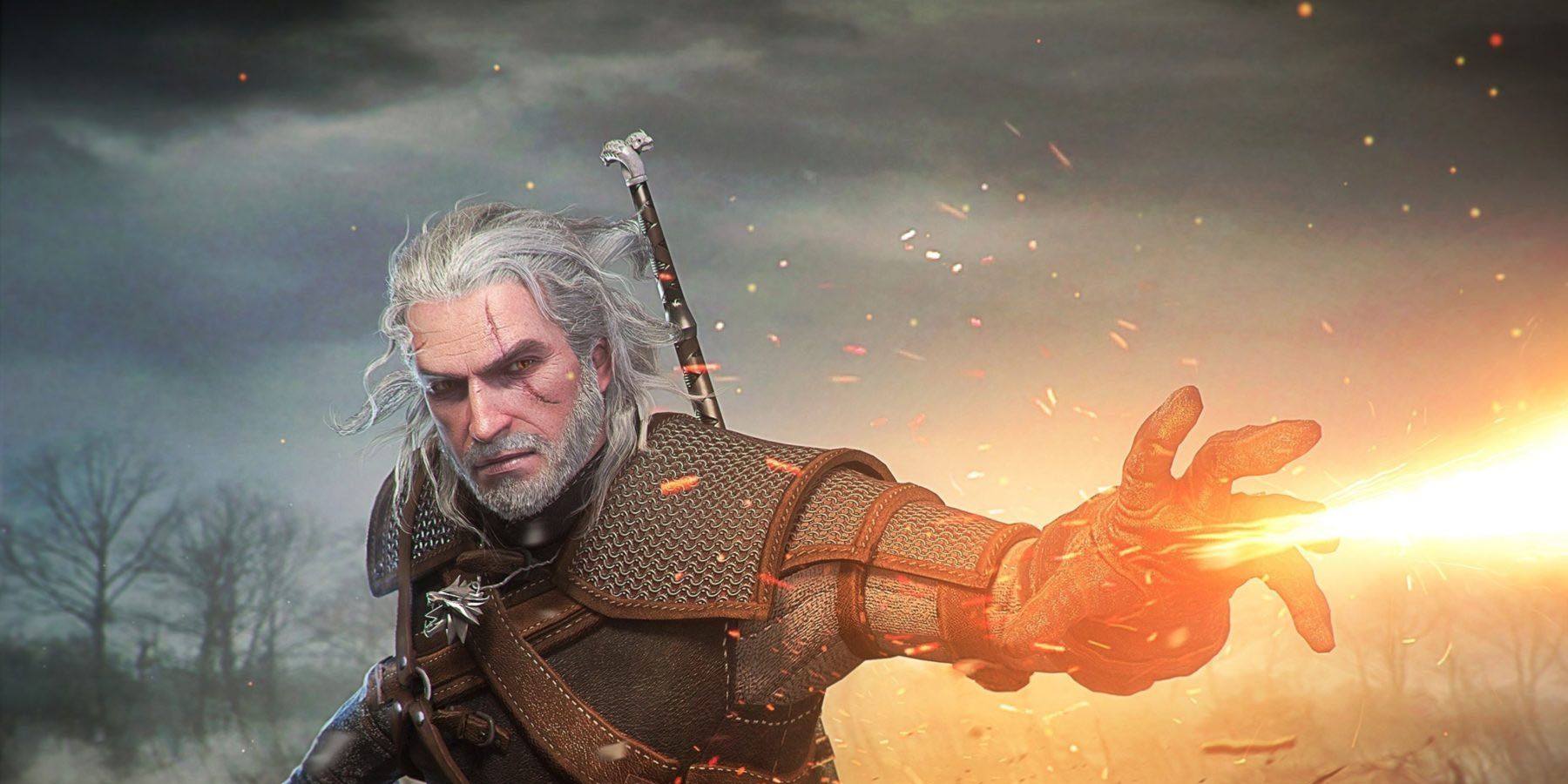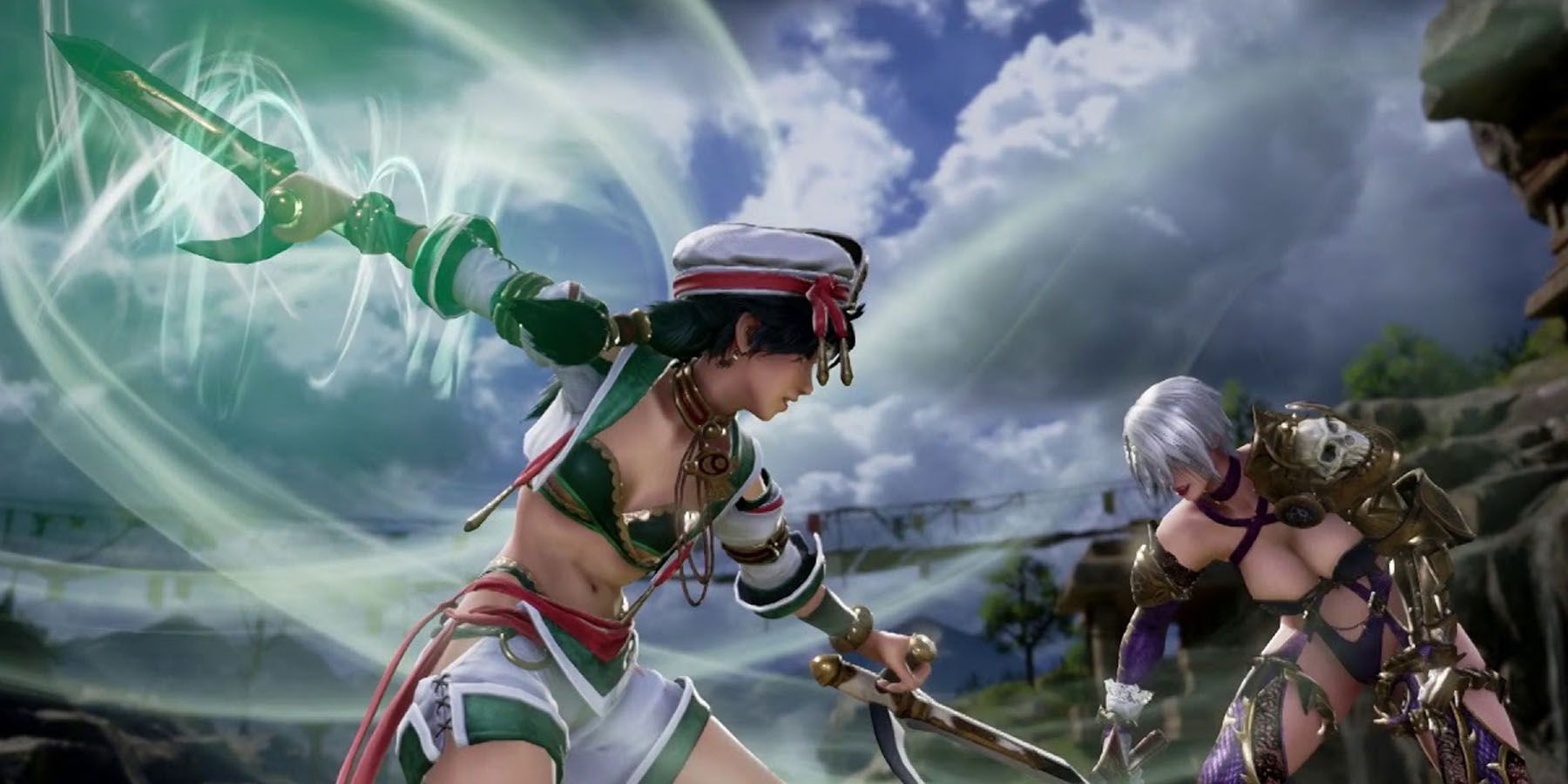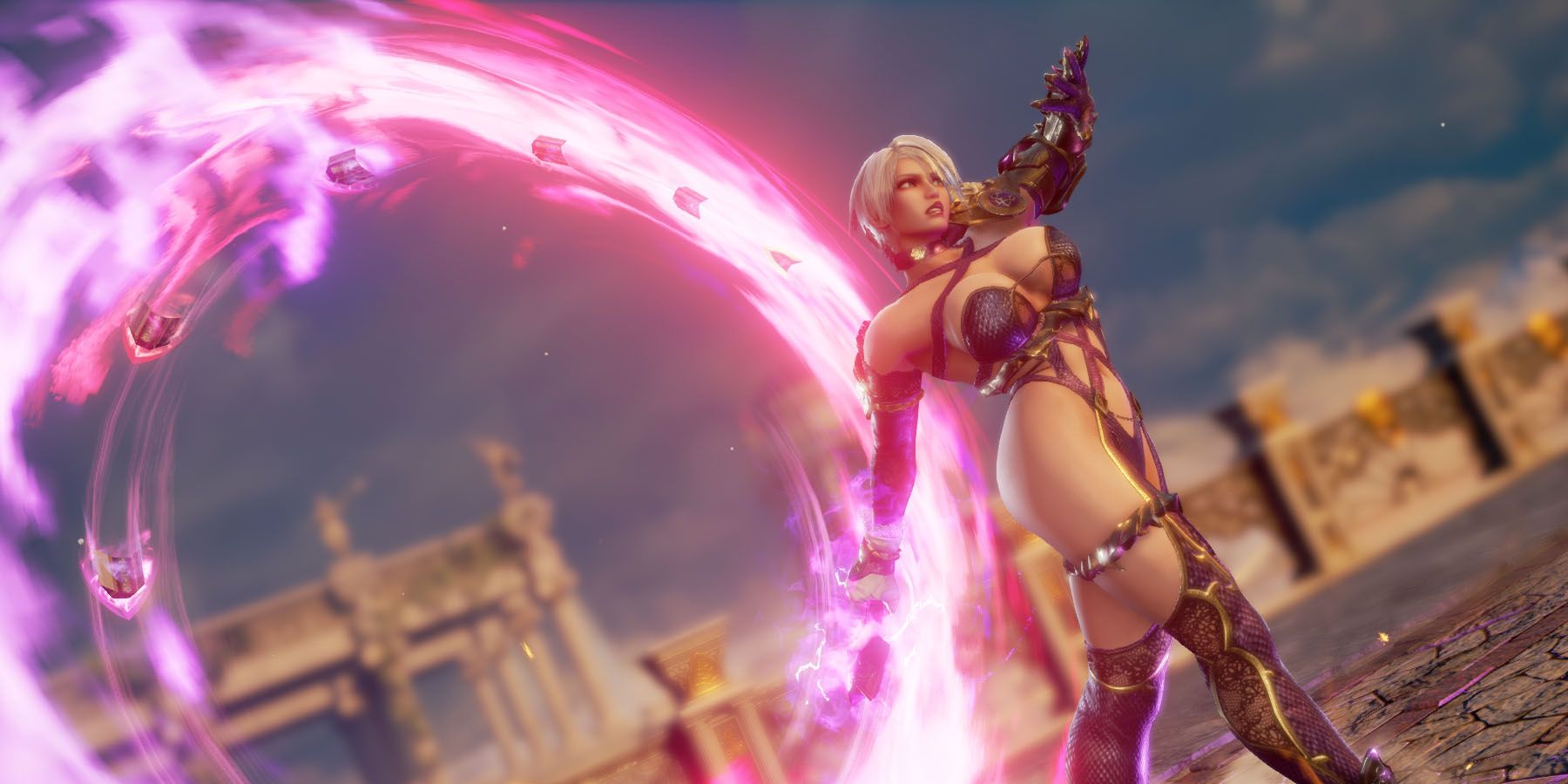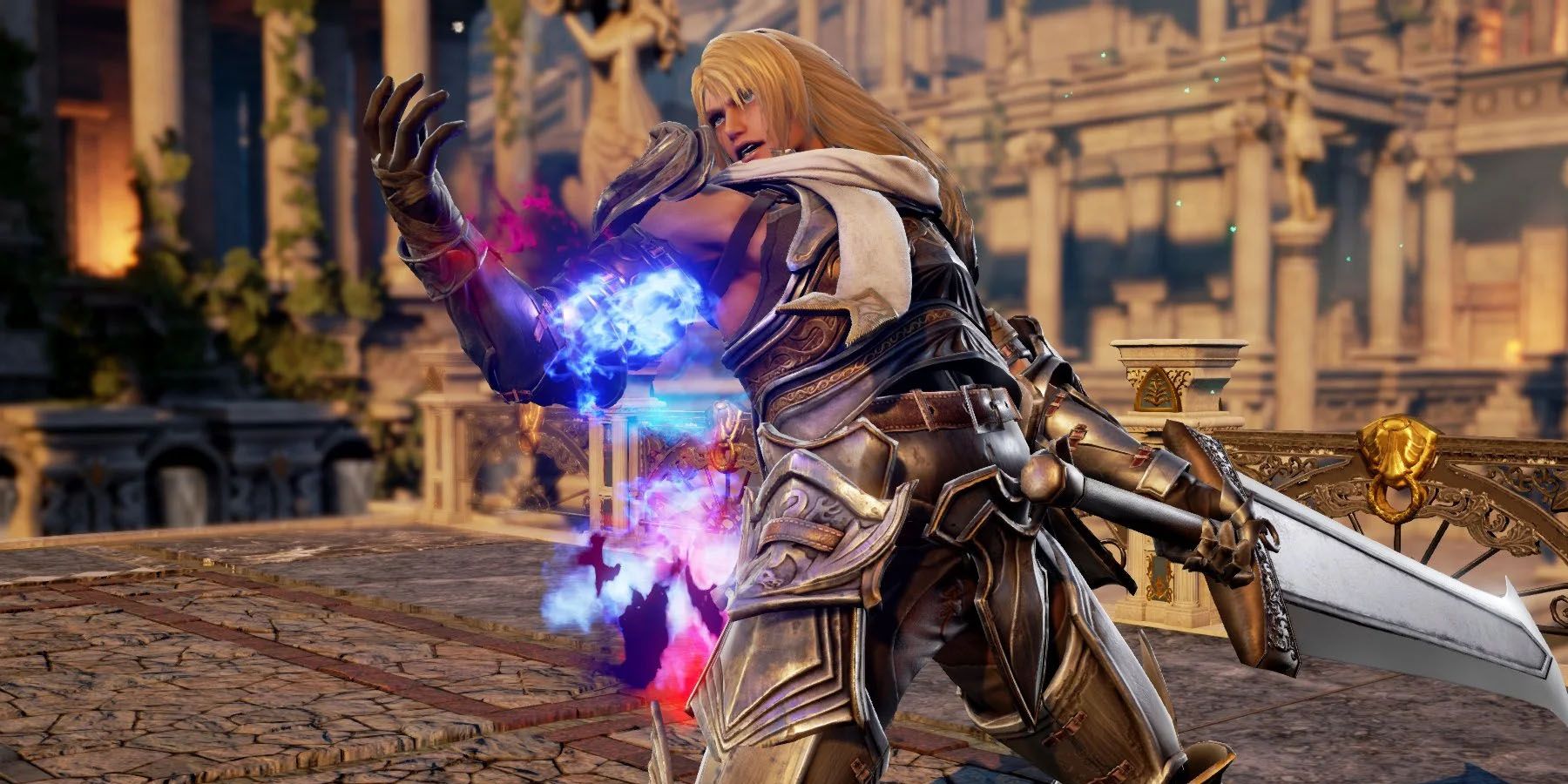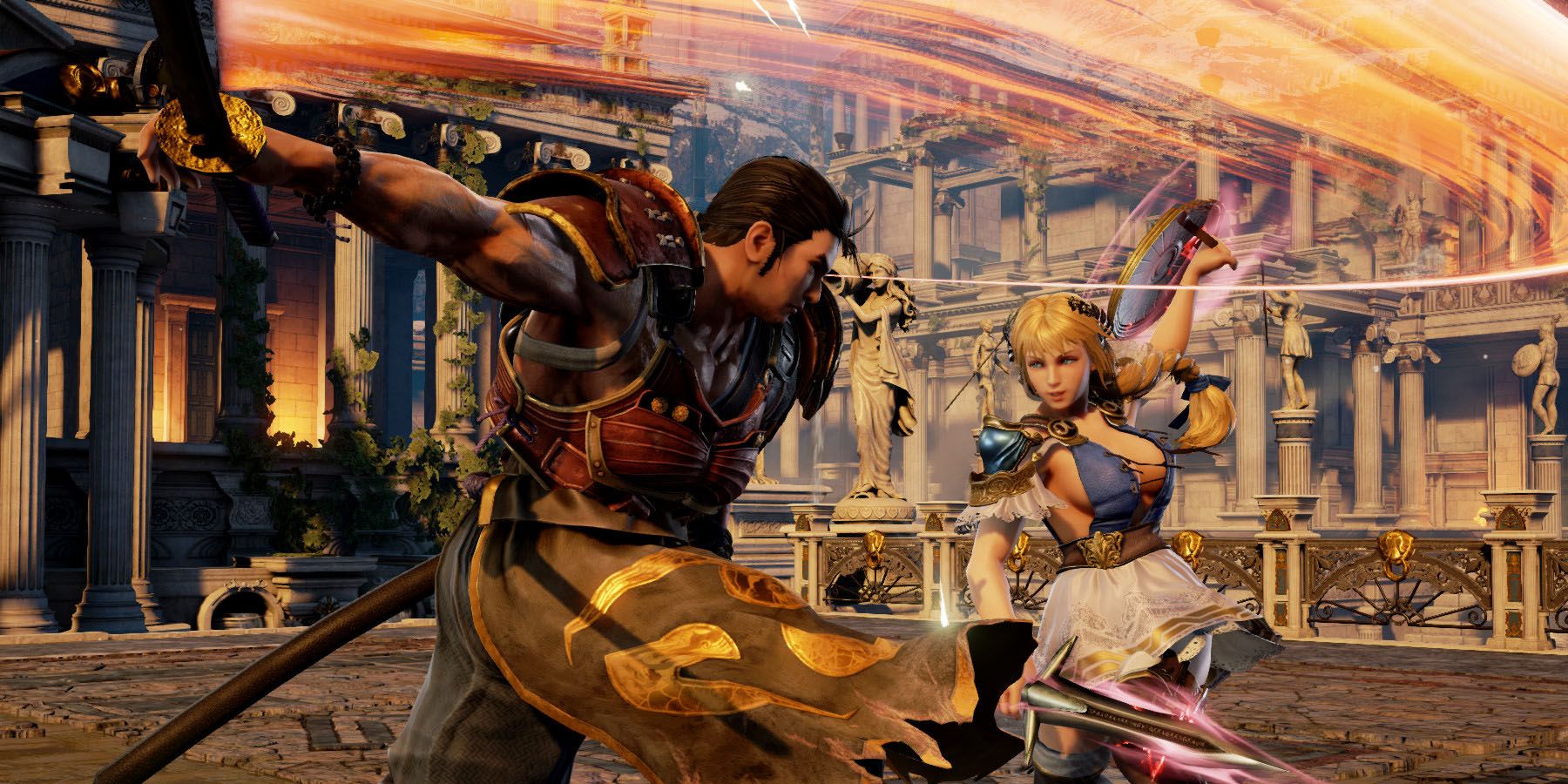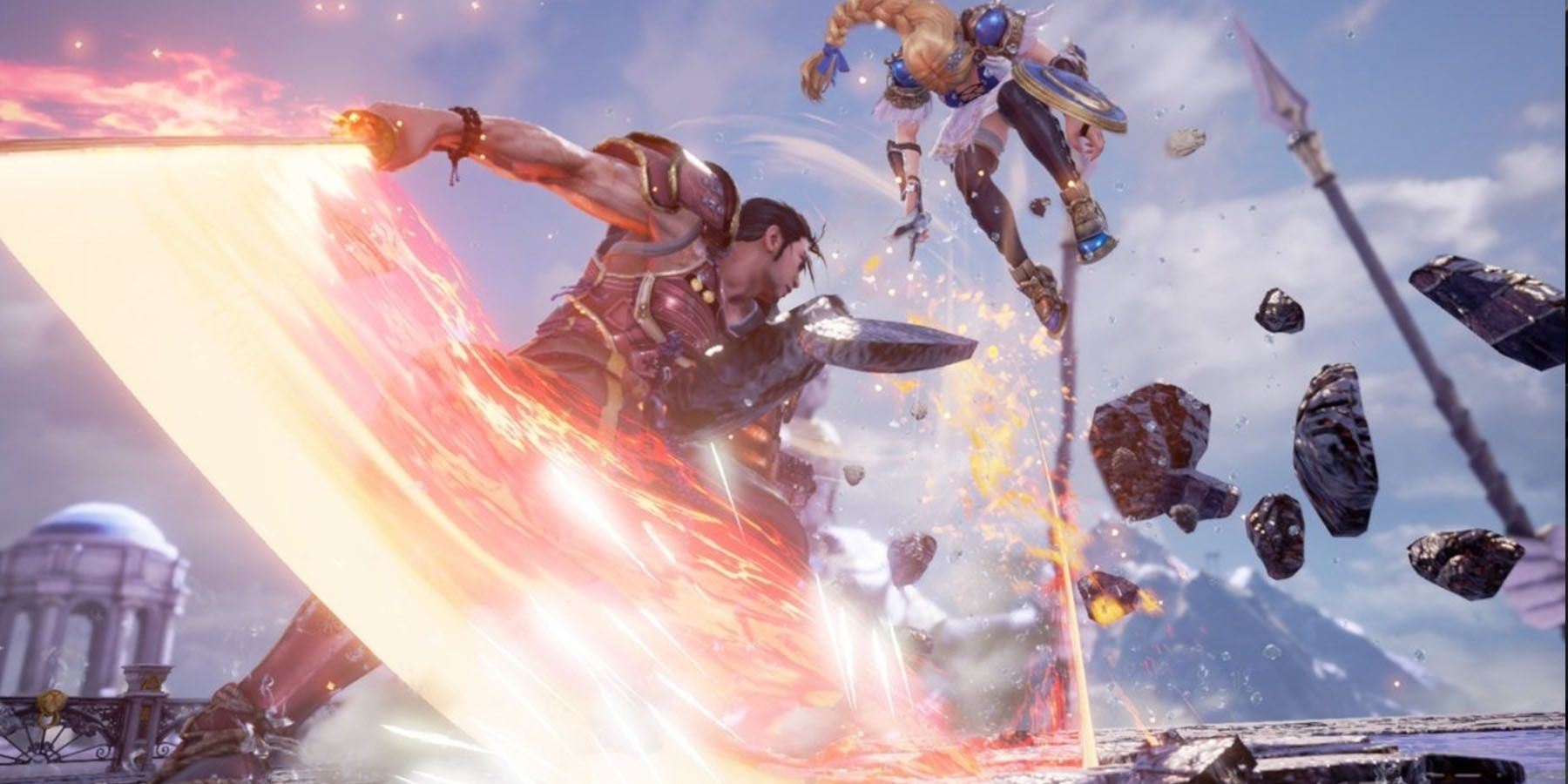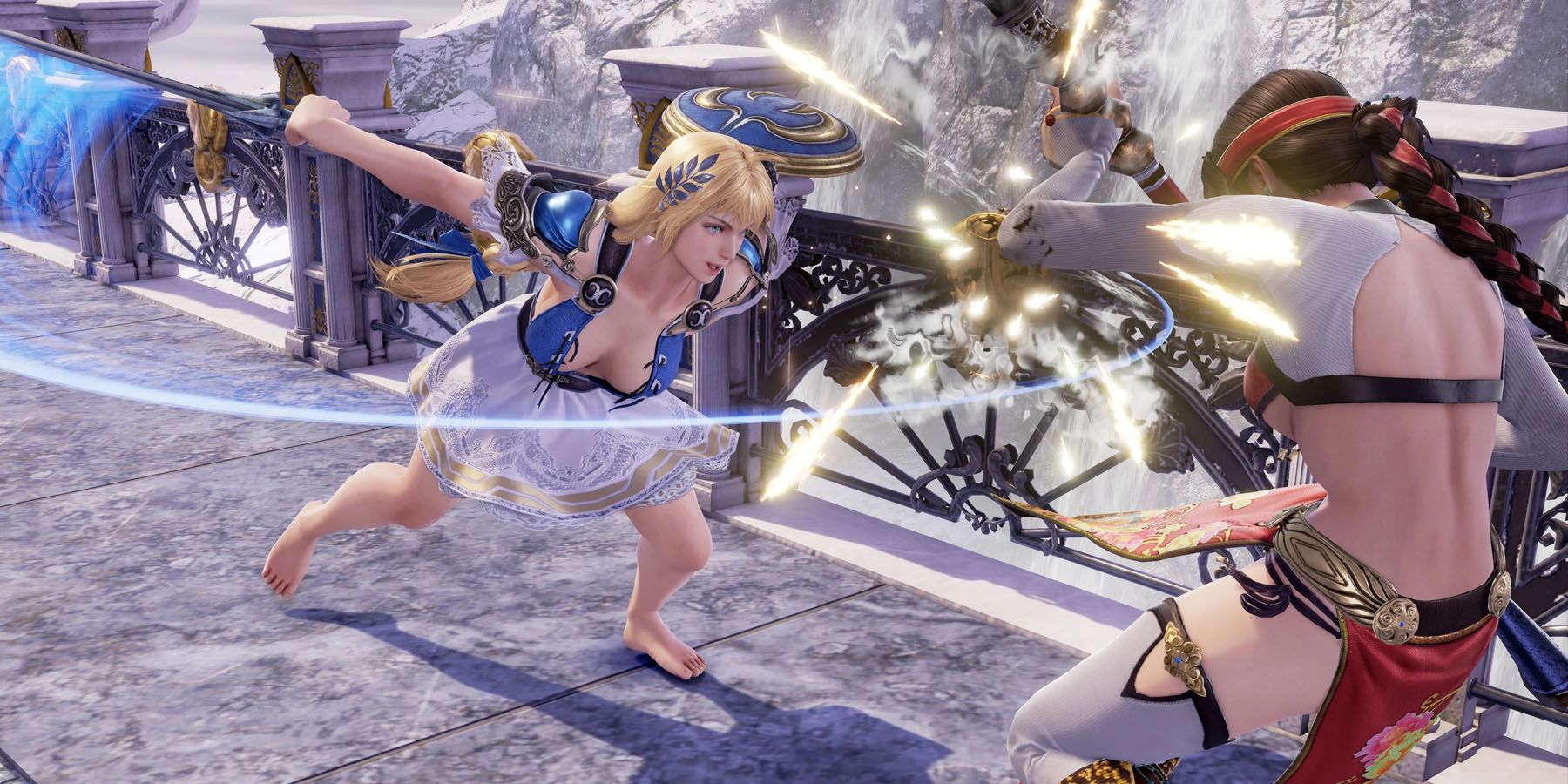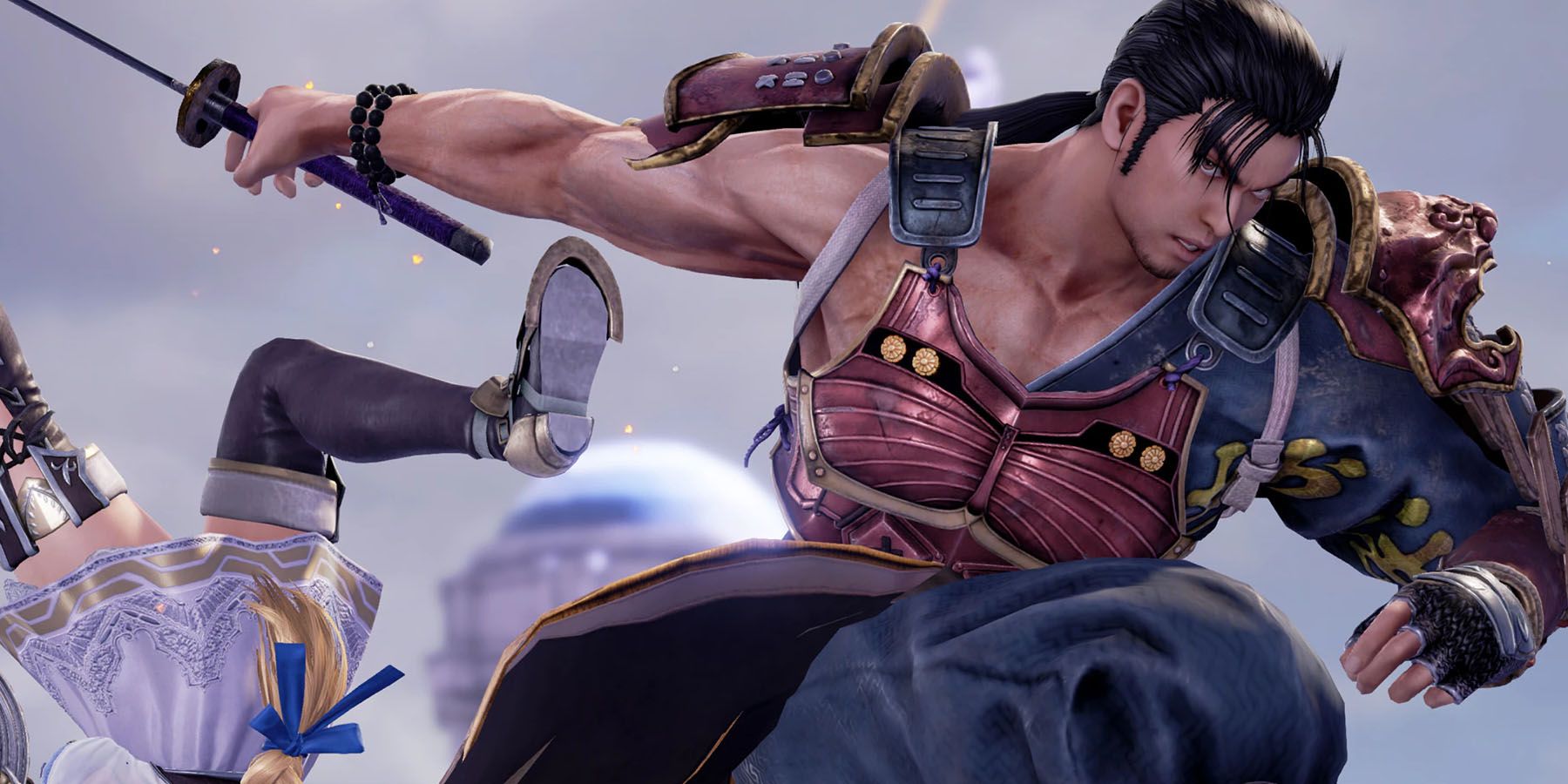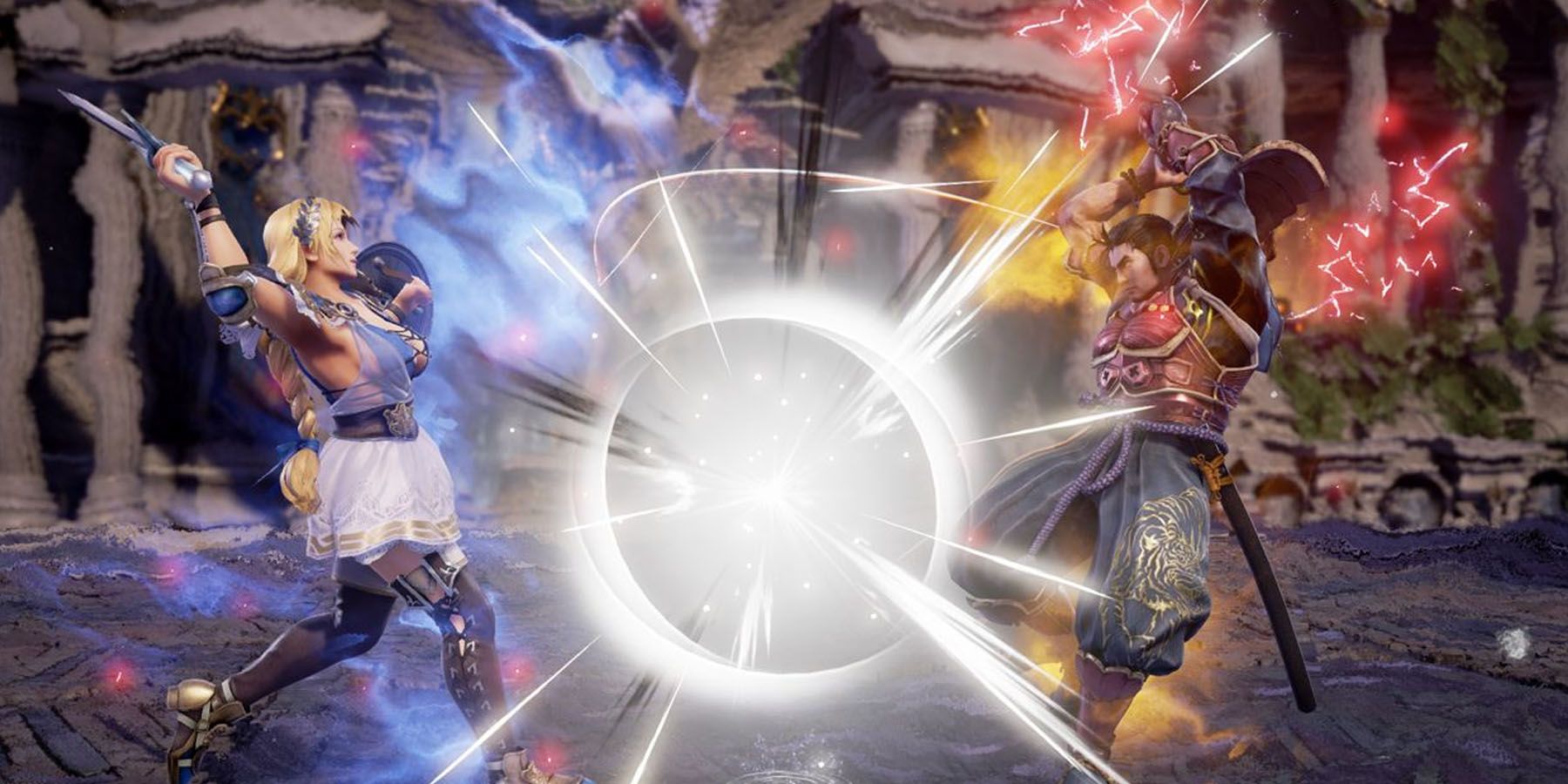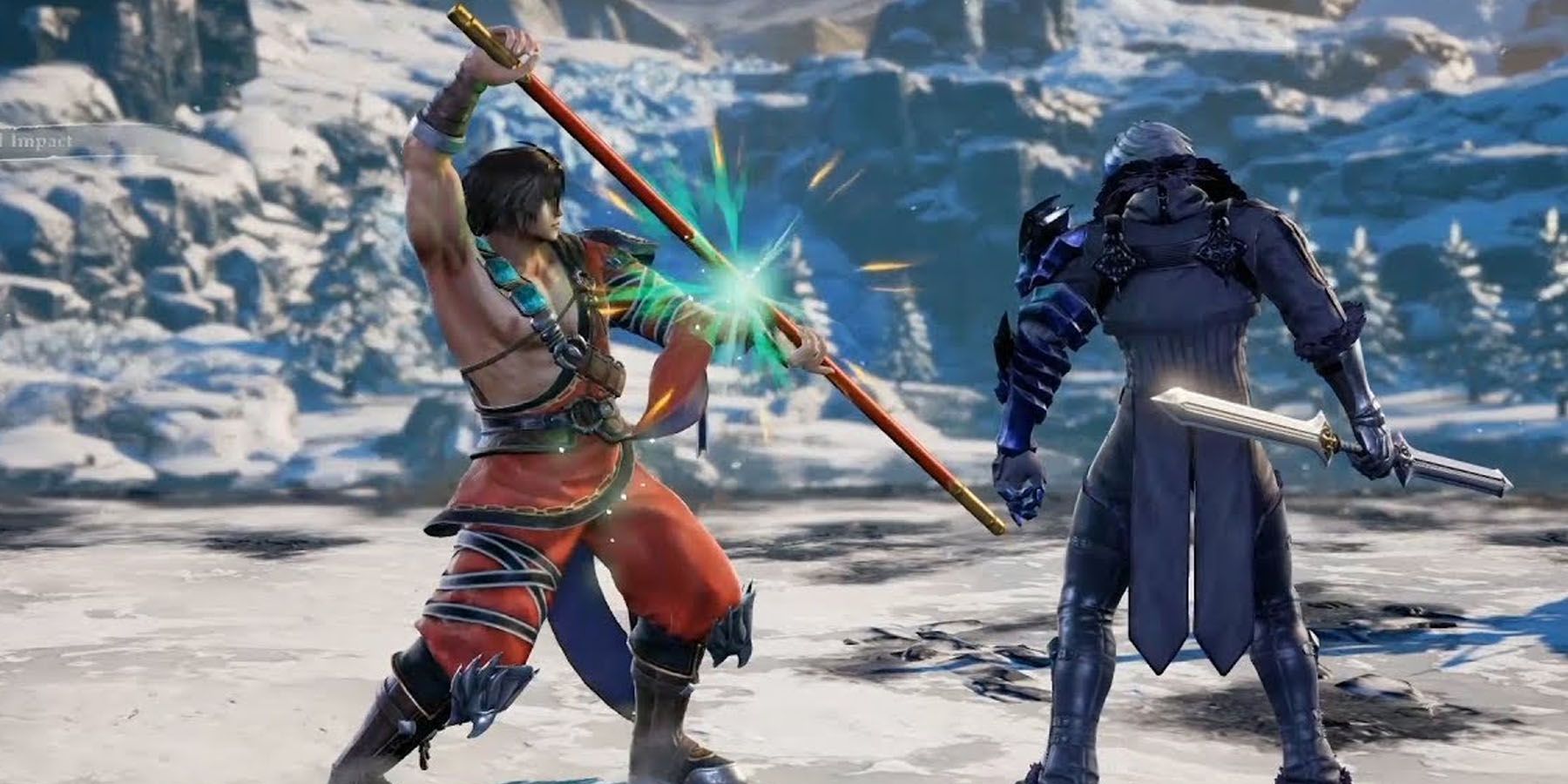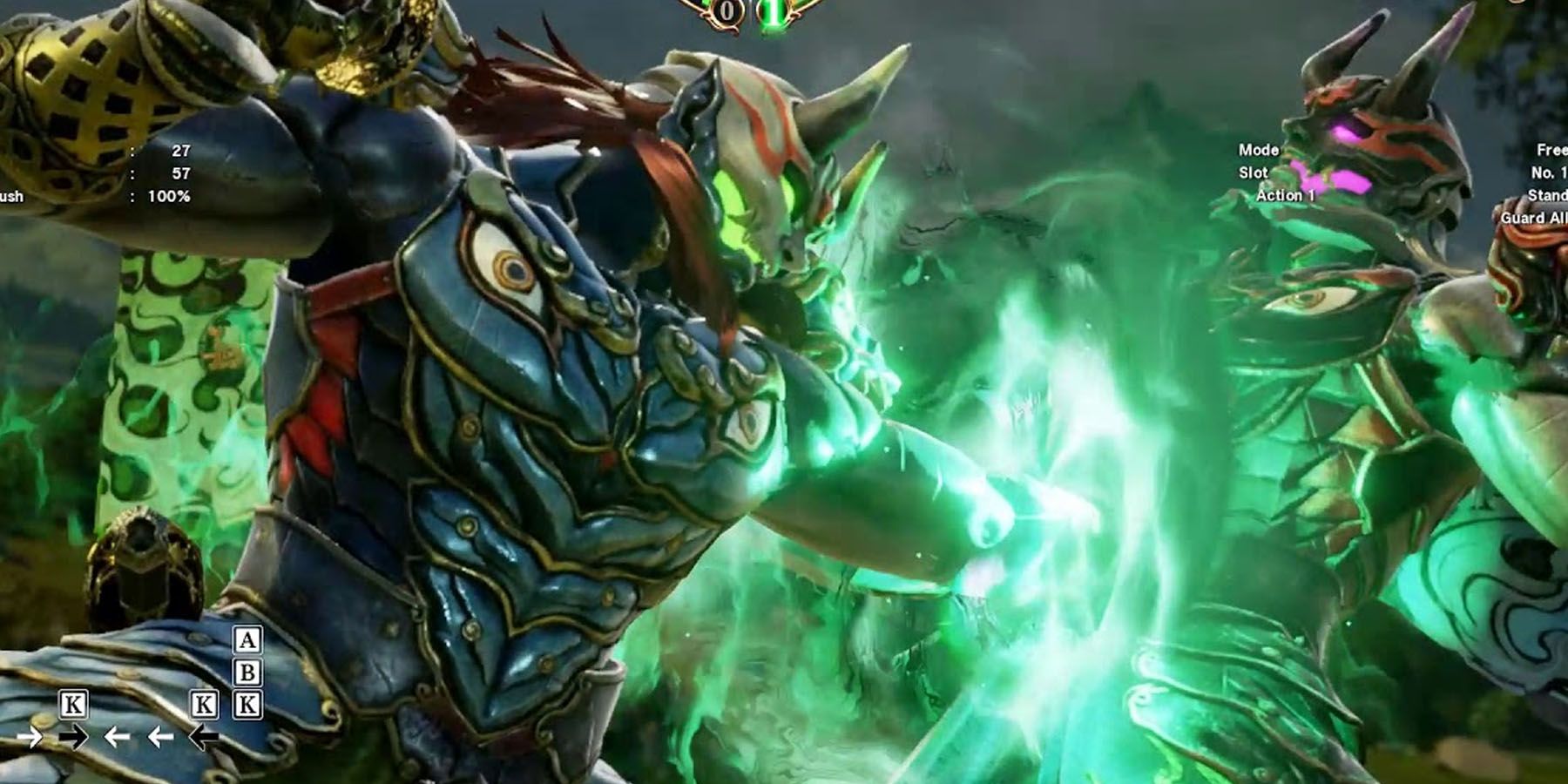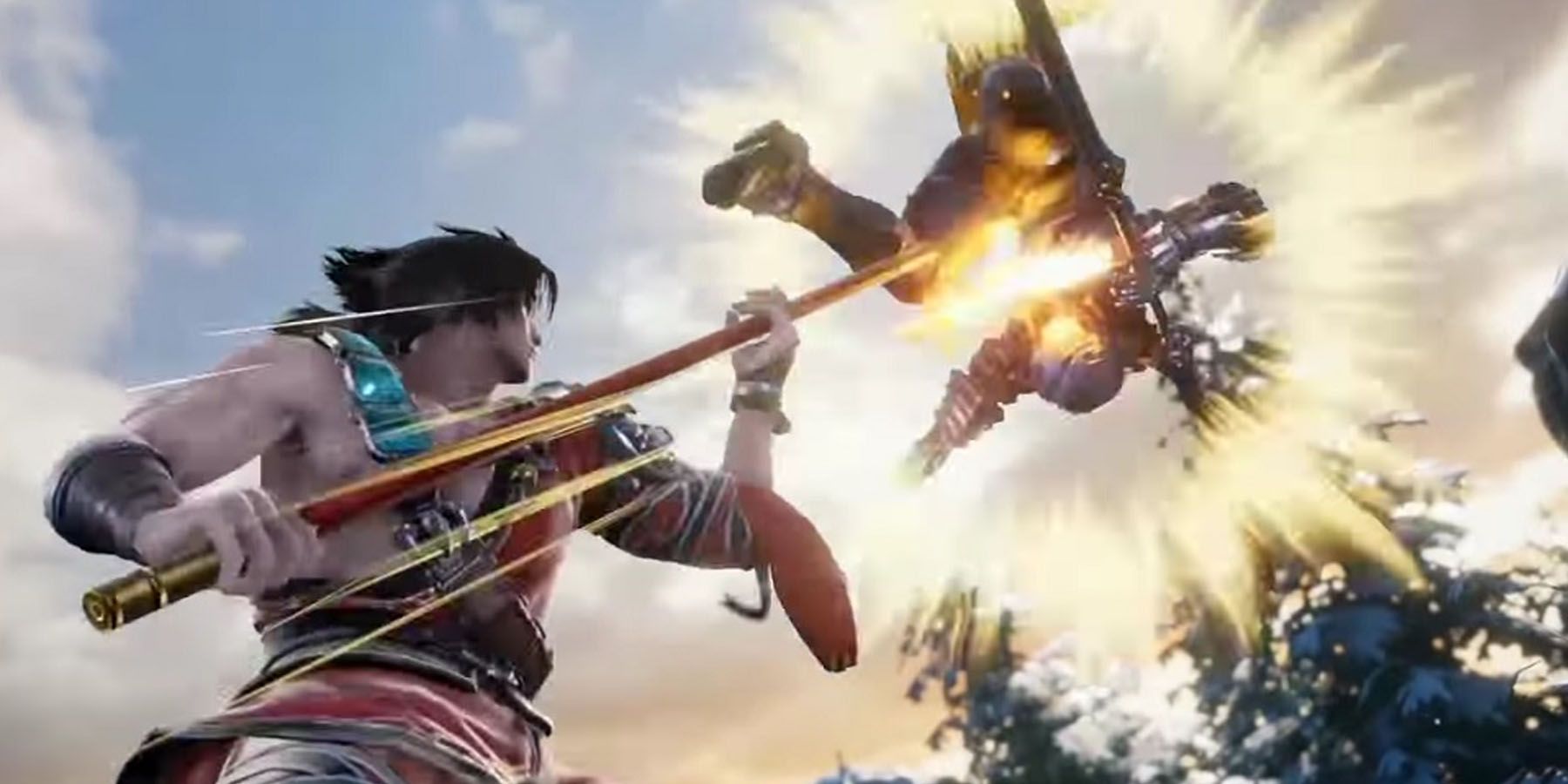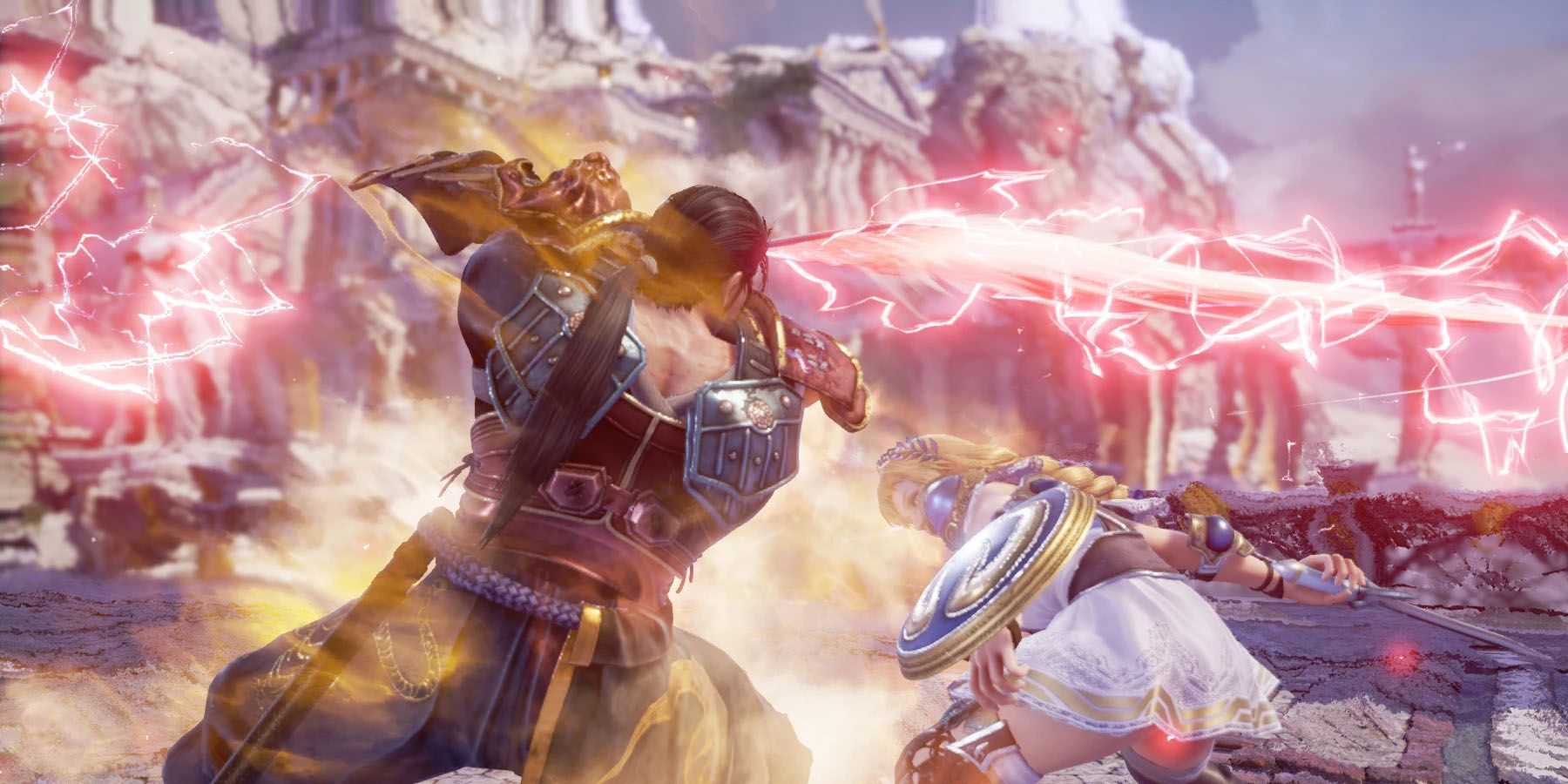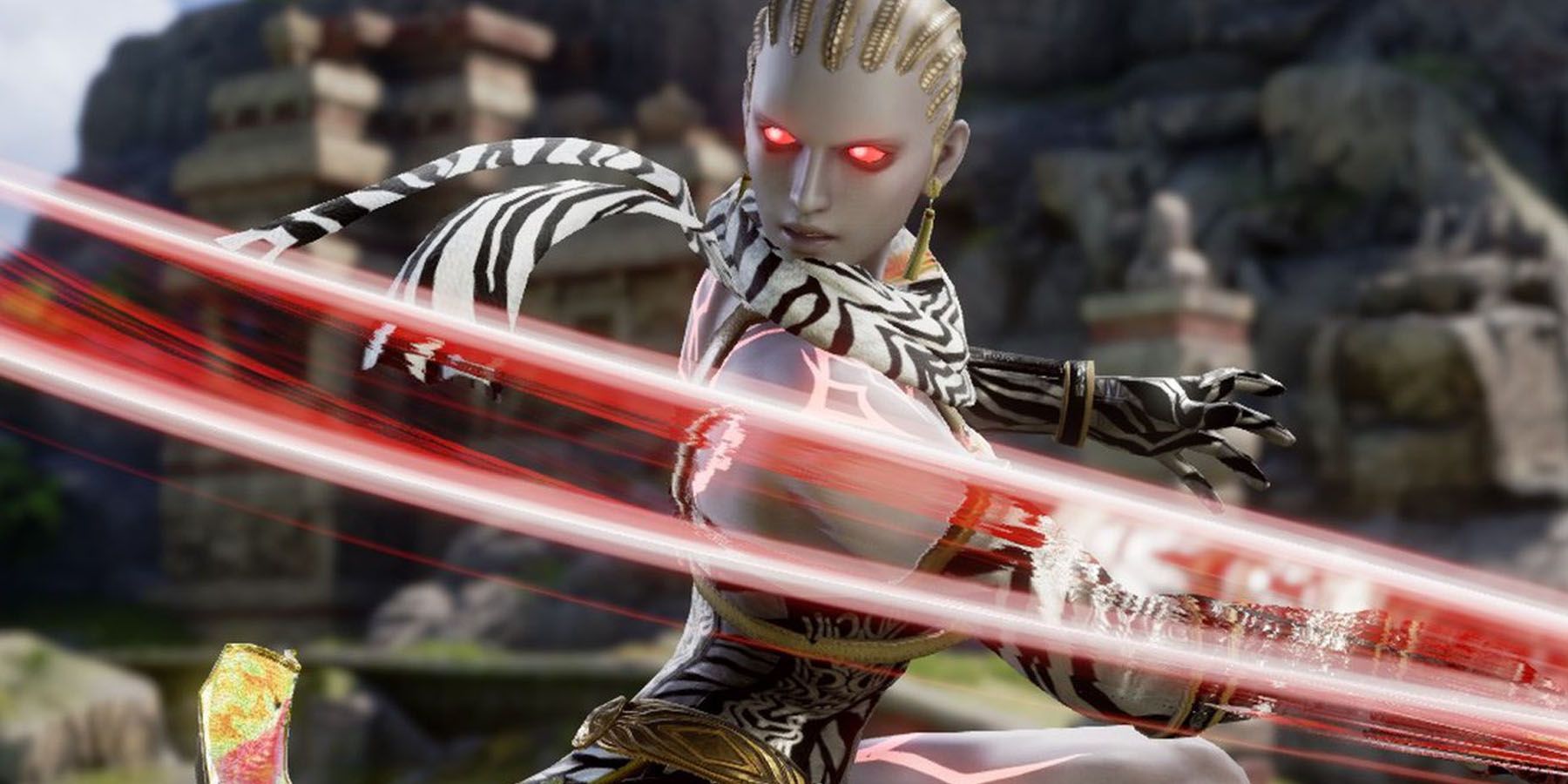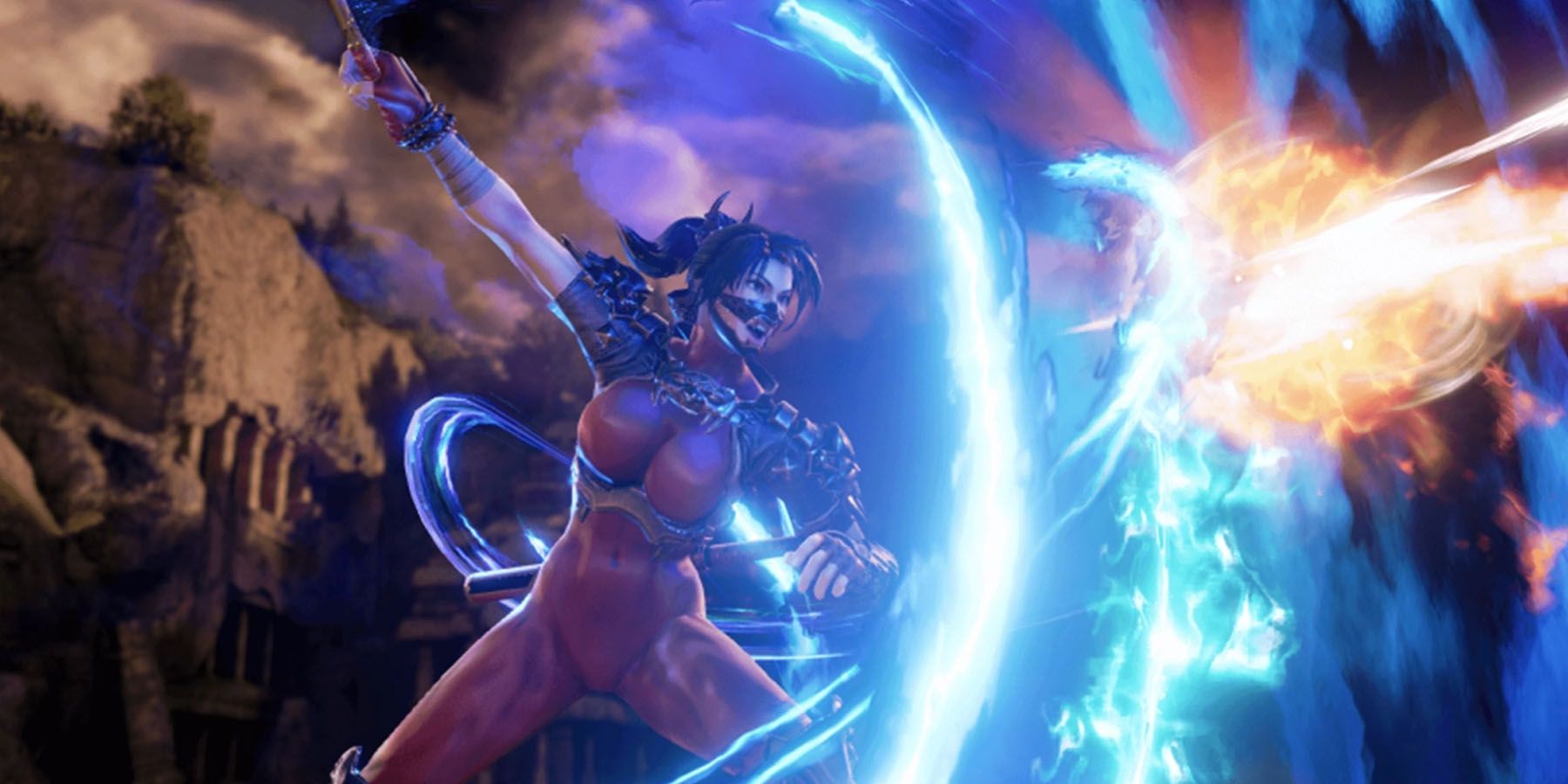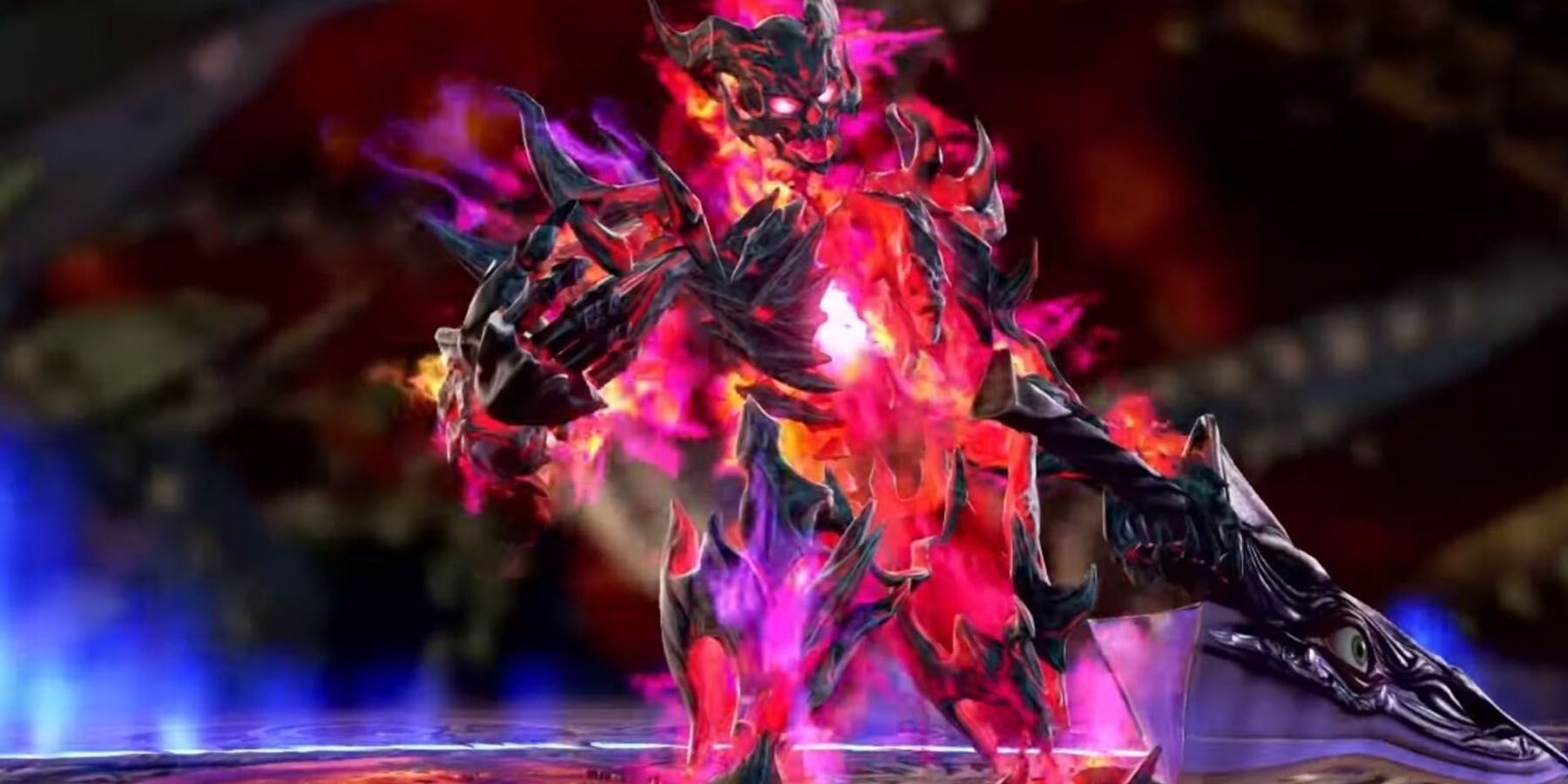Quick Links
With Soulcalibur 6 becoming a retelling of the Soulcalibur series, both newcomers and veterans of the franchise will have a blast trying out Soulcalibur 6 mechanics. Particularly interesting are its Weapon Styles, which revolve around a character and their particular weapon of choice. Characters emphasize their specialization with their weapons to gain the upper hand. Almost everyone has a unique way to approach combat.
Given these combat mechanics, how exactly should newcomers to the franchise approach their first foray into Soulcalibur 6? Just how different are the game’s elements and concepts compared to its contemporaries in the genre? Here's what new players should know before taking on the game.
Assess Character Types
While weapons already define a core aspect of characters in SoulCalibur 6, a lot of strategy has to do with character selection, especially since they also have Character Types. Each character’s type determines the kind of playstyle expected of them, giving players some idea as to how exactly they work in the context of facing opponents.
All-Rounders
All-Rounders specialize in being flexible enough to adjust into any situation without necessarily specializing in any particular one. They’re the easiest for beginners due to their ease of use and accessibility. Examples include Mitsurugi, Sophitia and Geralt of The Witcher series. More complex characters of this type include Xianghua, Zasalamel, and Raphael.
Rushdowns
These characters specialize in fast-paced combat and overwhelming enemies with sheer speed. Rushdown characters like pressuring opponents and controlling the battlefield from extremely close range. Examples include Groh, Talim, Taki, and even Maxi.
Zoners
Zoner characters specialize in controlling the battlefield from afar, effectively denying areas to enemies through the use of their pokes and long-ranged assaults. Ivy is a popular character in this category due to her whip-blade, while Seong Mi-Na and Kilik are also popular members.
Grapplers
These characters love getting up close and personal, as well as beating down characters to a pulp with their immense strength and even stronger throws and specials. Astaroth is immediately established as a Grappler, whereas Siegfried and Nightmare are more specialized tanks.
Mind The Eight-Way Run
SoulCalibur 6 not only allows movement across different directions but also free control over speed. Popularly known as the Eight-Way Run, this simply means SoulCalibur 6 gives players the freedom to use all four directional buttons and their respective diagonal directions.
One of the best benefits of the Eight-Way Run is how it allows players to access better offense and defense. As attackers, players can use the Eight-Way Run to rush towards opponents faster. Likewise, defenders can simply strafe out of harm’s way.
While it’s possible to guard against attacks when opponents are rushing, it’s possible to stop them in their tracks while performing a sprint. Players who do this not only delay an opponent’s advance, but also perform what’s known as a Run Counter, stunning the rushing foe.
Stay Clear Of Ring Outs
With SoulCalibur 6's unique Ring Out mechanic, players who get thrown off the stage automatically loses the round. This plays into a huge part of the strategy in the game, where sometimes the key to defeating a strong opponent isn’t necessarily to deplete their HP but to lure them out of the ring. Here are things to consider:
- If it’s possible to choose a stage, players should use walled indoor stages instead of open areas. While a walled stage limits movement, it also lessens the chances of a ring out.
- Pushing is key. Players need to consider their position within the stage. The enemy dodging a running player can put them in a lot of danger to get off the ring. Instead of doing that, players should time their moves to ensure that the enemies get closer to the edge of the ring.
- Analyze attacks with a lot of distance. Many characters in SC6 have attacks that allow them to juggle opponents and throw them around, such as Ivy with her long-distance pokes. Players need to be wary of how they can either dish out these attacks or find ways to regain their footing in order to avoid having these attacks throw them away.
- Once a player gets to the edge, a vertical launch attack will get them off the ring. Players need to be wary of this, as opponents may not hesitate dishing this out. Likewise, players can anticipate this move as well.
- Players who find themselves at a disadvantage don’t necessarily have to give up. In fact, a sidestep or two can get players out of a sticky situation by regaining neutral territory, or even getting opponents' backs on the cliff.
Understand Core Attack Methods
Whereas most fighting games have dedicated high and low attacks, SoulCalibur 6 has extra buttons due to its nature as a weapon-based fighting title. Here are the most relevant mechanics that beginners should always remember.
- Horizontal Attack (A) denotes a horizontal attack regardless of the weapon used. They work best against opponents that try to strafe, given that the area of coverage is to both the left and right. While they don’t deal as much damage, they’re great when defending against quick-footed foes.
- Vertical Attack (B) denotes the most straightforward of attacks. They hit extremely fast, but they’re fairly easy to defend against through sidestepping or parrying.
- Kick (K) means kicking the opponent instead of using a weapon. They are extremely versatile, as they can be directional (horizontal, vertical, high, mid, low) or even speed-oriented (slow or fast). Kicks deal less damage than weapon attacks but can interrupt opponents quickly.
Attacks Have Directions
One element common between SC6 and other fighting games is attack directions. Attacks have different relationships with each other based on their particular direction: High, Mid, or Low.
- High Attacks always aim for the head, and are probably the fastest directional variant. Using High Horizontals can keep the enemy grounded, as this stops them from jumping too much and from moving around. Crouching Guards protect against High Attacks.
- Mid Attacks are primarily geared towards neutral, surer strikes, as they aim for the body. They are hard-hitting attacks, making them perfect to start combos. Mid Horizontals are tricky to evade, since they pass through Crouching Guards.
- Low Attacks: Aimed towards the legs, Low Attacks are much trickier to anticipate since they always hit standing opponents, regardless if they’re guarding. While Crouching Guards protect against Low Attacks, these attacks tend to come too fast for players to anticipate. However, Low Attacks do leave players open to other attacks.
The Magic Of Guards & Throws
Given how SoulCalibur 6 provides a lot of directional attack options, the game offers a universal Guard function that serves as a nifty defense against opponents.
The Guard
Denoted with (G), this simply pertains to guarding against an opponent’s potential attack. There are a lot of elements involved in Guarding that players need to understand:
- Holding Guard while maintaining a neutral stance will have the player defend with a Stationary Guard. This can block high and mid attacks, but will leave them vulnerable to low attacks.
- Likewise, crouching while Guarding performs a Crouching Guard, perfect against low attacks and high attacks. However, mid attacks will always hit.
- Players sticking too much to Guarding will transform their blue life bar into a red bar, which indicates that they are fairly close to a Guard Crush. If they suffer a Guard Crush, this leaves them wide open for counters.
- Serving as the game’s version of a parry, Guard Impact (Forward+G) deflects an enemy’s attack. Using a Guard Impact will also throw opponents to the floor and knock them down, leaving them wide open.
Guard Advantage
Being able to Guard doesn't just protect players against attacks, but also give them a bit of advantage afterwards. The opponent will have a bit of a “pause” afterwards, when players can strike.
During this window, avoid power moves. While it’s tempting to use heavier attacks to maximize this advantage, they’re simply too slow to maximize the brief pause when opponents are started after guards. Instead, memorize fast moves: It’s more efficient to use extremely fast moves to overtake a disoriented opponent.
The Throw
Players need to prepare their defense against the game’s variety of damaging moves, especially since Throws can stop players from Guarding entirely. Here are some things to consider:
- Throws (A+G) are a useful counter against Guards. The player will simply grab an opponent and throwing them to a short range. Players need to be careful when performing Throws, as one misstep can leave them open to attacks.
- Throw Break (A, Back+A) ensures that players aren’t completely defenseless against Throws. As soon as players are grabbed, they can press A to execute a Throw Break. Likewise, press Back + A if grabbed from the back to stop a back throw. There’s very little room to do this in a real-time match, but it can save defenders from harsh counters.
Reversal Edge Brings Back The Pain
Reversal Edge is an animated sequence that can interrupt an opponent. Players on the receiving end of an attack can press (B) to initiate Reversal Edge, which means pulling their blade back and absorbing attacks. A rock-paper-scissors scenario will ensue, where a wrong move can put either player at a severe disadvantage if their chosen move is beatable by the opposing side’s.
This move breaks enemy momentum by forcing a slow-motion windup animation, forcing both players into a stalemate. In this case, they will need to choose between pressing an attack button, a direction with an attack button, moving away, or guarding.
- When attacking, (A) beats (K), (B) beats (A), and (K) beats (B).
- Adding a movement component allows players to counter extremely specific attacks but lose to the rest. A-Forward beats (A), A-Side beats (B), A-Back beats (K).
- Using a Guard (G) against Reversal Edge means players won’t take any damage, but this brings the guarding party extremely close to a Guard Crush.
- One of the best ways to defeat Reversal Edge is tonever partake in it. Players who are dishing out combos to an opponent who is about to use Reversal Edge have a split second to sidestep out of the windup animation, ensuring they don’t get involved.
Mind The Soul Gauge
Like other fighting games, SoulCalibur 6 offers players the ability to unleash super moves, courtesy of the Soul Charge. This is a bar near the timer that fills up whenever players take hits or unleash Lethal Hits towards foes. This meter can charge up to two stocks, with two unique functions available for players to pull off with each.
Critical Edge (A + B + K)
A Critical Edge is performed by pressing all three attack buttons at once. This releases the character’s most devastating move, which comes with a unique animation.
Each Critical Edge has different mechanics. However, unlike games where special animations are almost always invincible, the Critical Edges in SoulCalibur 6 aren’t end-all, be-all. In fact, with the right timing, some characters could be cut out of the process of their Critical Edge.
Soul Charge (Back, A + B + K)
Serving as more of an emergency move, the Soul Charge will have characters release a burst of energy that pushes the opponent away. This will turn the yellow Soul Gauge blue, making characters enter the Soul Charge Mode. Each character enters Soul Charge differently, be it through glowing or changing outfits outright via transformation.
In the Soul Charge Mode, each character gets improved statistics for their moveset. This is especially apparent with their normals that still deal a bit of damage even when blocked. When positioned correctly, a Soul Charge can push opponents too far for any of their attacks to hit. This allows both players to return to neutral states in order to recuperate or strike a counterattack.
Soulcalibur 6 was released on October 19, 2018, for the PC, PS4, and Xbox One.

